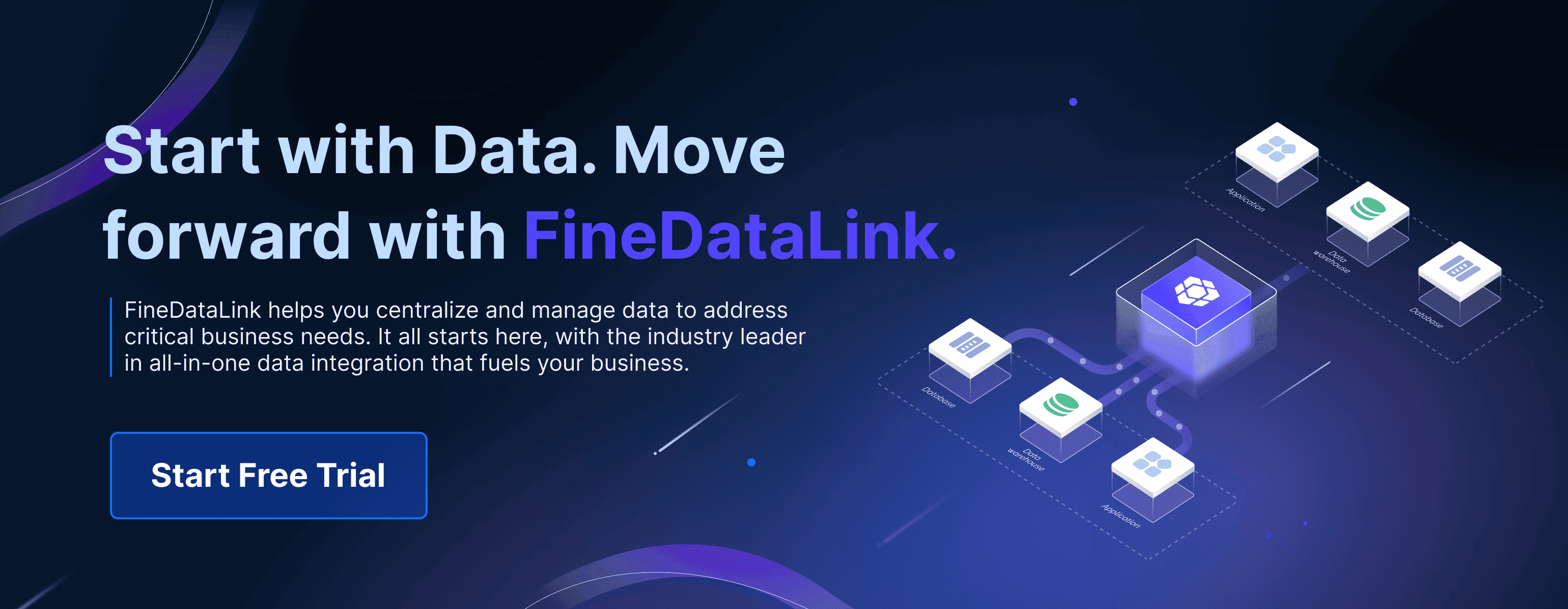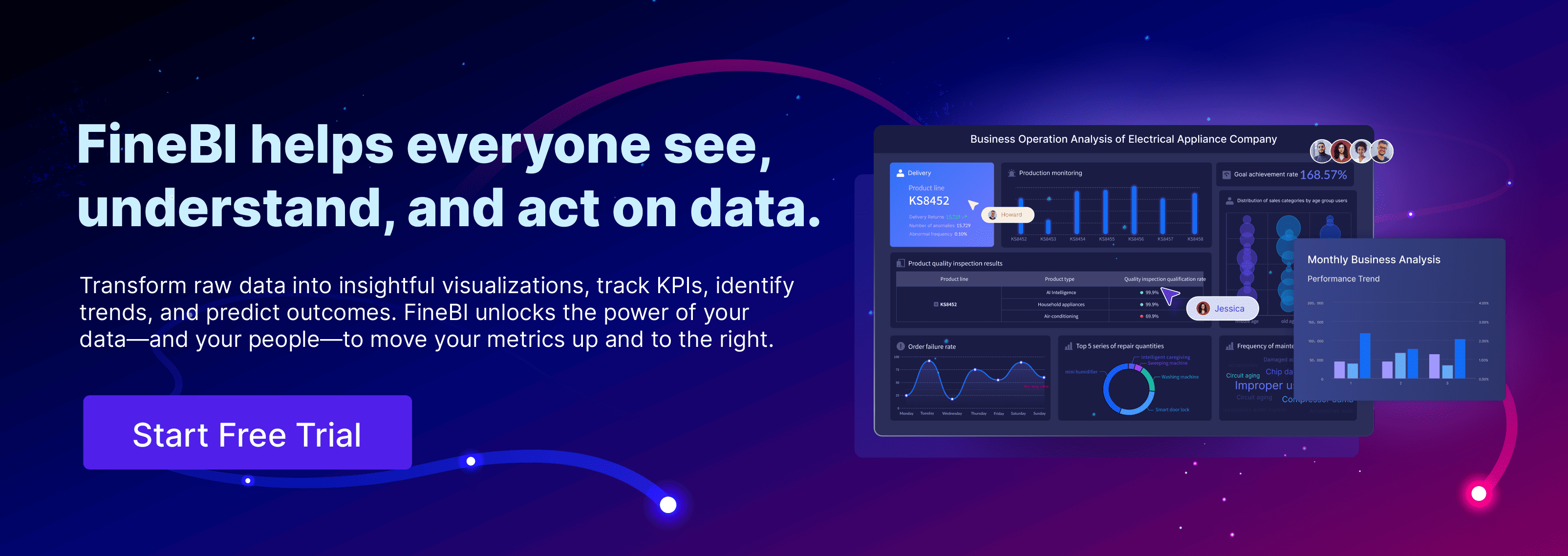Healthcare data analysis is transforming how you experience medical care. By analyzing large datasets, it identifies risks and tailors treatments to your unique needs. For example, population health management uses analytics to pinpoint health risks in groups, enabling proactive care. Machine learning models, like David Howell’s, predict up to 80% of emergency readmissions, reducing hospital strain. Tools such as FineBI turn this data into actionable insights, helping healthcare providers personalize care and improve outcomes. In 2025, these advancements will redefine the healthcare landscape, ensuring better care for everyone. Before reading do you wanna a try first? Click and put up a request.
Understanding Healthcare Data Analysis
What Is Healthcare Data Analysis?
Healthcare data analysis involves examining vast amounts of healthcare data to uncover patterns, trends, and insights. It helps you make sense of raw information, such as data from electronic health records, to improve patient care and operational efficiency. By using tools like machine learning and data visualization, healthcare analytics enables you to identify the best treatment options based on patient histories and genetic data.
This process is not just about crunching numbers. It’s about transforming data into actionable insights that can save lives. For example, Florence Nightingale’s meticulous data collection revolutionized nursing practices. Today, advancements in healthcare data analytics continue to reshape how you receive care, from personalized treatments to improved hospital management.
Note: While statistical knowledge is not always required, understanding basic statistics can enhance your ability to work with healthcare data analytics effectively.
Types of Healthcare Data Analysis: Descriptive, Diagnostic, Predictive, and Prescriptive
Healthcare data analysis can be categorized into four main types, each serving a unique purpose:
- Descriptive Analysis:
This type answers the question, "What happened?" It summarizes historical data to identify trends and patterns. For instance, hospitals use descriptive analytics to track patient admissions and allocate resources efficiently. - Diagnostic Analysis:
Diagnostic analysis delves deeper to answer, "Why did it happen?" It identifies the root causes of issues. In healthcare, this might involve analyzing patient records to understand factors contributing to readmissions. - Predictive Analysis:
Predictive analysis forecasts future outcomes based on historical data. It answers, "What is likely to happen?" For example, healthcare organizations use predictive analytics to anticipate patient needs and optimize resource allocation. - Prescriptive Analysis:
This advanced type combines insights from the other three to recommend specific actions. It answers, "What should we do?" By guiding you toward the best course of action, prescriptive analytics helps improve decision-making and patient outcomes.
| Type of Analysis | Key Question | Example in Healthcare |
|---|---|---|
| Descriptive | What happened? | Tracking patient admissions |
| Diagnostic | Why did it happen? | Identifying causes of patient readmissions |
| Predictive | What is likely to happen? | Forecasting patient outcomes |
| Prescriptive | What should we do? | Recommending treatment plans |
These types of analytics work together to provide a comprehensive understanding of healthcare data, enabling you to make informed decisions.
The Growing Importance of Data Analytics in Modern Healthcare
Data analytics is becoming indispensable in modern healthcare. With healthcare generating nearly 30% of global data, the ability to analyze this information is critical. However, studies show that less than 60% of this data is used for intelligent decision-making. This gap highlights the need for improved investment in healthcare analytics.
Healthcare organizations are increasingly adopting advanced data platforms that integrate analytics and AI capabilities. These platforms enable real-time data processing, which is essential for improving patient outcomes and operational efficiency. For example, over 50% of U.S. healthcare providers plan to increase their spending on generative AI, reflecting the growing reliance on data analytics.
By leveraging healthcare data analysis, you can enhance patient care, detect diseases earlier, and even prevent fraud. The ability to process data from electronic health records and other sources allows healthcare providers to deliver personalized care tailored to individual needs. As a result, data analytics is not just a tool; it’s a cornerstone of modern healthcare.
Real-World Applications of Healthcare Data Analysis
Predicting Hospital Usage and Optimizing Resources
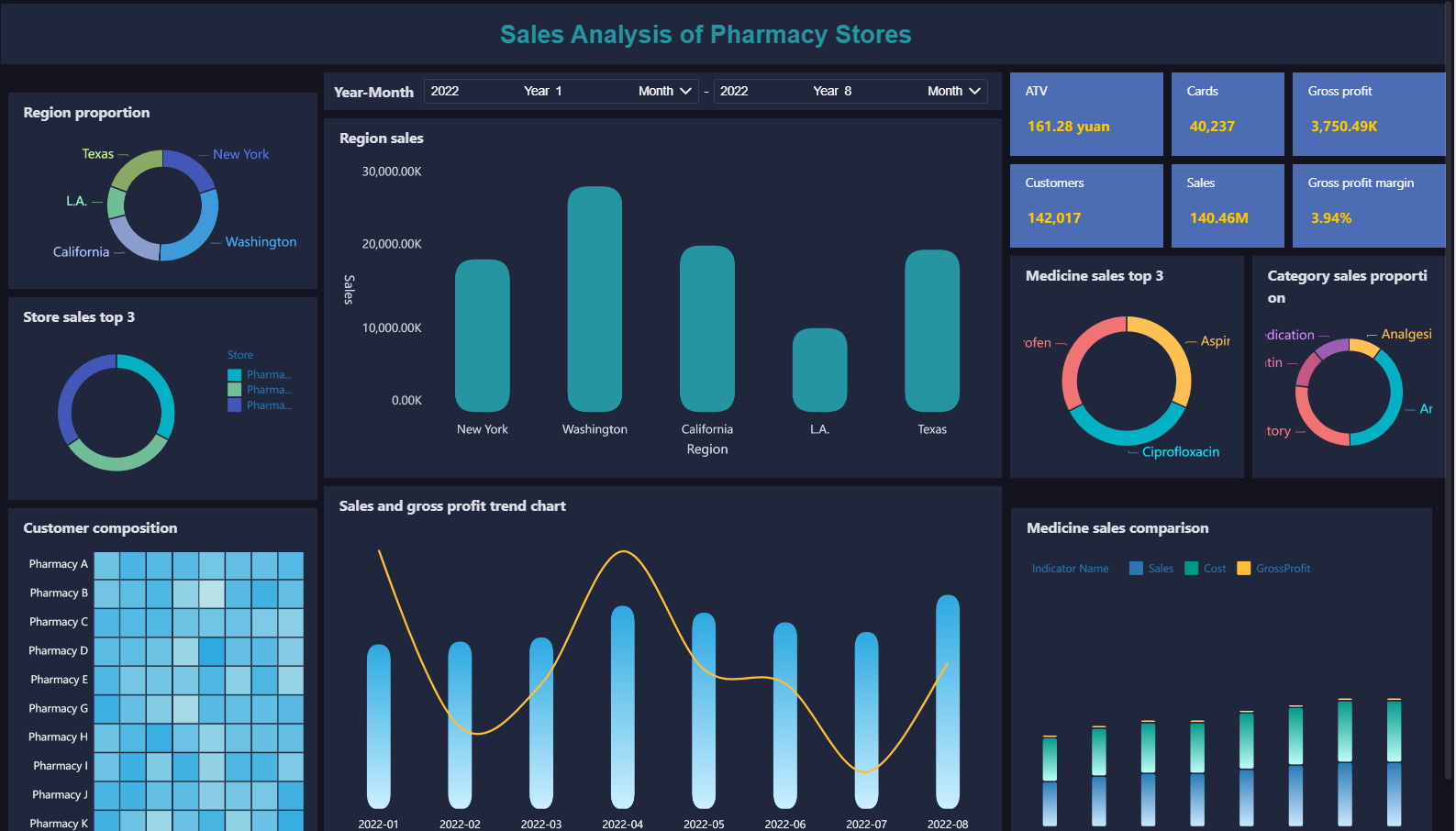
Healthcare data analytics plays a vital role in predicting hospital usage and ensuring resources are allocated efficiently. By analyzing historical and real-time data, hospitals can anticipate patient inflow, optimize staffing, and reduce wait times. For example:
- Emergency rooms using data analytics have reduced average wait times by over 40%, significantly improving patient throughput and care quality.
- Massachusetts General Hospital leveraged analytics to decrease appointment and procedure wait times, enhancing patient satisfaction and aligning staffing with demand patterns.
Predictive analytics also helps healthcare providers prepare for unexpected events. During the COVID-19 pandemic, machine learning models accurately forecasted clinical severity, enabling hospitals to allocate beds, ventilators, and staff effectively. UnityPoint Health used similar tools to reduce hospital readmissions by 40%, advising patients on managing symptoms before they worsened.
A study by Gundersen Health System demonstrated how predictive analytics increased room utilization by 9% and reduced appointment no-shows. These examples highlight how actionable insights from healthcare analytics improve operational efficiency and patient care simultaneously.
| Case Study | Outcome | Description |
|---|---|---|
| Predicting COVID-19 patient outcomes | Accurate forecasting of severity | Machine learning predicted COVID-19 severity using initial hospitalization data. |
| Reducing hospital readmissions | 40% reduction in readmissions | UnityPoint Health advised patients based on predicted symptom return. |
| Improving clinical outcomes | 26% lower hospitalization rates | Home healthcare providers reduced hospitalizations using WellSky CareInsights. |
| Effective resource allocation | 9% increase in room utilization | Gundersen Health System optimized room usage and reduced no-shows. |
Enhancing Patient Care Through Personalized Medicine
Personalized medicine tailors treatments to individual patients based on their genetic, environmental, and lifestyle factors. Healthcare data analytics enables this approach by analyzing vast datasets to identify patterns and predict treatment outcomes. This method improves patient care by ensuring treatments are more effective and targeted.
Statistical evidence underscores the benefits of personalized medicine:
| Metric | Personalized Medicine | Standard Treatment | Improvement |
|---|---|---|---|
| Response Rates | 30% | 4.9% | 25.1% |
| Progression-Free Survival | 5.7 months | 2.95 months | 2.75 months |
| Blood Pressure Control | 85% | 65% | 20% |
| Diabetes Management | 80% | 65% | 15% |
| Cancer Objective Response Rate | 16.4% | 5.4% | 11% |
| 10-Year Overall Survival Rate | 6% | 1% | 5% |
| Cardiovascular Event Reduction | 30% | N/A | N/A |
| Diabetes Complication Reduction | 35% | N/A | N/A |
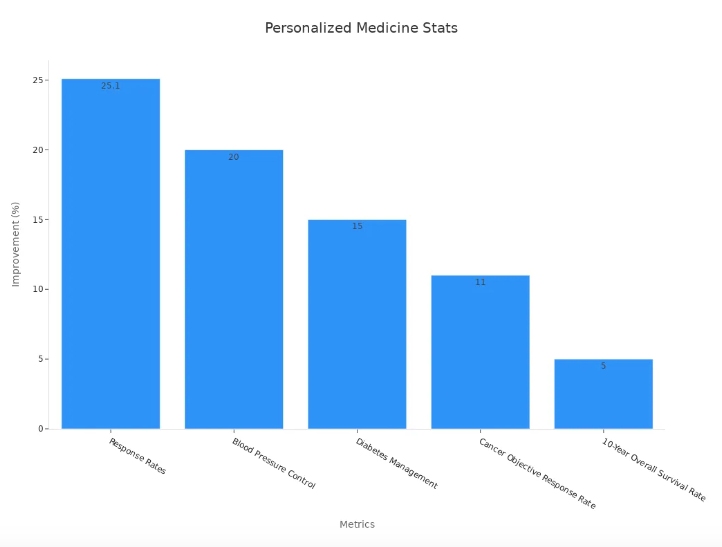
Real-world data further supports this approach. Physicians now use tools to determine the benefits of treatments for individual patients, improving outcomes. Engaging in informed discussions about real-world evidence enhances medical knowledge and ensures ethical use of data. Personalized medicine, powered by healthcare data analytics, transforms how you receive care, making it more precise and effective.
Supporting Evidence-Based Decision-Making with FineBI
FineBI empowers healthcare organizations to make evidence-based decisions by transforming raw data into actionable insights. Its tailored analysis scenarios provide specific insights into healthcare operations, enabling you to address challenges effectively. For example, FineBI simplifies data processing, allowing analysts to focus on deeper analysis rather than manual data handling.
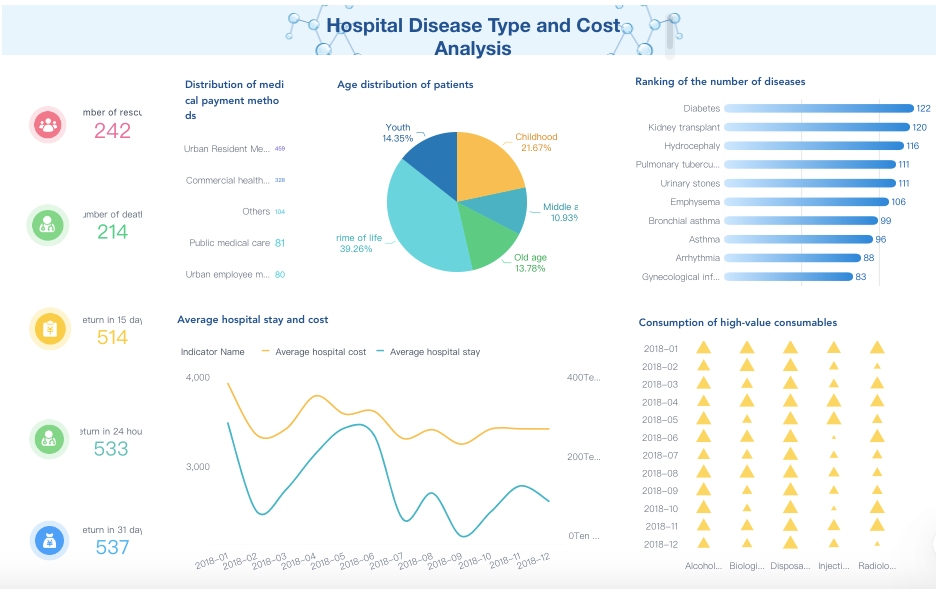
The platform also enhances communication among stakeholders. Clear data visualizations facilitate better engagement, ensuring everyone understands the insights. FineBI’s ability to present key business metrics helps management identify trends and make informed decisions.

| Feature | Benefit in Healthcare Decision-Making |
|---|---|
| Tailored Analysis Scenarios | Provides specific insights relevant to healthcare operations. |
| Key Business Metrics Presentation | Empowers management to make informed decisions based on trends. |
| Simplified Data Processing | Allows analysts to focus on deeper analysis rather than data handling. |
| Enhanced Communication | Facilitates better stakeholder engagement through clear data visualization. |
By integrating FineBI into your healthcare analytics strategy, you can improve patient care, optimize resources, and drive better outcomes. Its user-friendly interface and robust capabilities make it an essential tool for modern healthcare organizations.
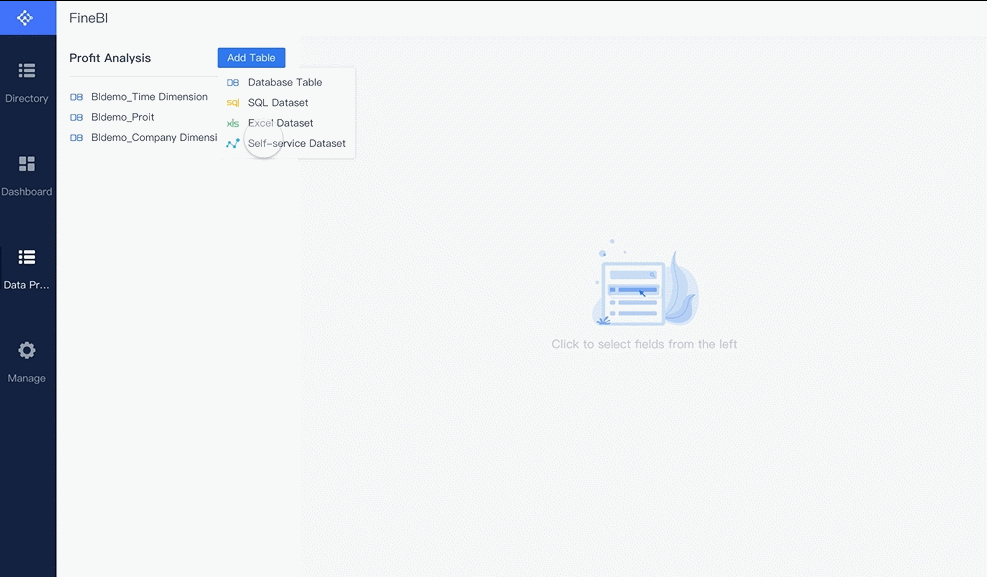
Improving Public Health with Population Healthcare Data Analysis
Population health analytics is transforming how communities address public health challenges. By analyzing data from diverse sources, such as electronic health records and social determinants of health, you can identify trends, predict risks, and implement targeted interventions. This approach improves health outcomes for entire populations while reducing costs and enhancing resource allocation.
One of the most significant impacts of population health analytics is its ability to reduce preventable hospital admissions. For example, hospitals using analytics have seen an 18.7% decrease in preventable admissions. This improvement not only saves lives but also reduces the strain on healthcare systems. Additionally, analytics has increased medication adherence by 24.3%, ensuring patients follow prescribed treatments effectively. These advancements highlight how data-driven insights can lead to better health outcomes.
| Outcome Measure | Mean Improvement | 95% Confidence Interval | p-value |
|---|---|---|---|
| Preventable Admissions | -18.7% | (-22.3%, -15.1%) | <0.001 |
| Medication Adherence | +24.3% | (19.8%, 28.8%) | <0.001 |
| Chronic Disease Control | +15.9% | (12.4%, 19.4%) | <0.001 |
| Screening Compliance | +32.1% | (27.6%, 36.6%) | <0.001 |
| Cost Per Patient | -12.4% | (-15.9%, -8.9%) | <0.001 |
Population health analytics also plays a crucial role in managing chronic diseases. By identifying high-risk patients and tailoring interventions, healthcare providers have improved chronic disease control by 15.9%. For instance, diabetes management programs that use analytics have achieved a 17% improvement in control metrics. These programs help patients maintain healthier lifestyles and avoid complications.
Screening compliance has also benefited from analytics, with a 32.1% increase in timely screenings. Early detection of conditions like cancer or cardiovascular disease allows for prompt treatment, significantly improving survival rates. Moreover, analytics has reduced unnecessary imaging studies by 28%, ensuring resources are used efficiently and patients avoid unnecessary procedures.
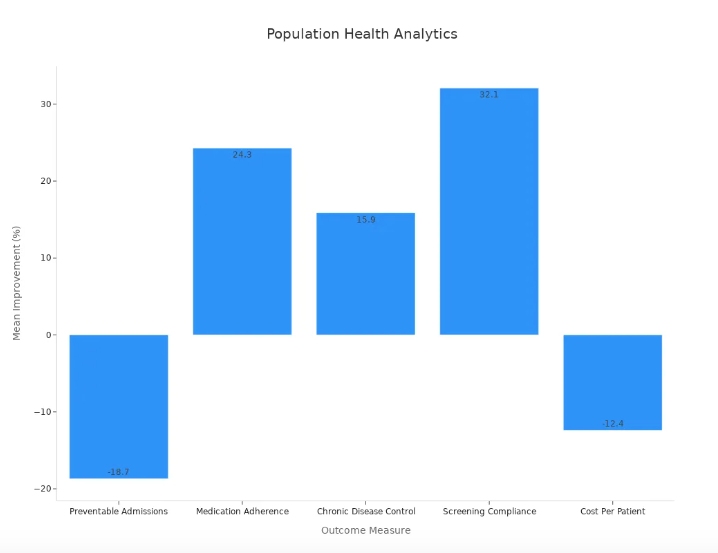
The financial benefits of population health analytics are equally impressive. By reducing unnecessary utilization and improving care coordination, healthcare systems have saved $42 million annually. Cost per patient has decreased by 12.4%, making healthcare more affordable and accessible for everyone.
Here are some additional ways population health analytics has improved public health outcomes:
- 22% reduction in 30-day readmissions for heart failure patients.
- 35% increase in timely follow-up for high-risk discharges.
- 28% reduction in unnecessary imaging studies.
- $42 million in annual cost savings through reduced utilization.
Population health analytics empowers you to make data-driven decisions that benefit entire communities. By identifying trends, predicting risks, and implementing targeted interventions, you can improve health outcomes, reduce costs, and create a healthier future for everyone.
Benefits of Healthcare Data Analysis
Better Patient Outcomes Through Early Detection and Prevention
Early detection strategies significantly improve the quality of patient care by identifying health risks before they escalate. For example, Early Warning Systems (EWS) have proven highly effective in detecting at-risk patients. These systems demonstrate sensitivity rates ranging from 67% to 94%, ensuring timely interventions. In a study involving 706 patients, only 5% experienced clinical deterioration, highlighting the impact of early detection. Additionally, the average time from alert to deterioration was 16 hours, giving healthcare providers ample time to act.
The benefits of early detection extend to long-term treatment outcomes. For instance, the five-year survival rate for breast cancer detected at stage 1 is nearly 99%, compared to just 27% for stage 4. Hospitals have also seen a 22% reduction in mortality rates since 2019, with 200,000 more Americans surviving hospitalizations between April 2023 and March 2024. These advancements underscore how healthcare data analytics enhances patient care decisions and improves outcomes.
Cost Efficiency and Reduced Waste in Healthcare Systems
Data analytics plays a pivotal role in reducing waste and improving cost efficiency in healthcare delivery. Over the past decade, inventory audits have uncovered significant hidden value. For example, GHX Inventory Count Services identified $200,000 worth of expired products during hospital audits. One hospital discovered $46 million in hidden inventory value, showcasing the financial benefits of analytics-driven inventory management.
The broader economic impact of waste reduction is equally impressive. Medical waste accounts for 25% of U.S. healthcare spending, costing between $760 billion and $935 billion annually. By leveraging healthcare analytics, healthcare organizations can implement cost-saving measures that reduce waste and optimize resource use. These efforts not only save money but also enhance the quality of care provided to patients.
Optimized Resource Allocation with Tools Like FineDataLink
Optimizing resource allocation is critical for improving healthcare delivery. Tools like FineDataLink enable healthcare organizations to integrate and synchronize data from multiple sources, ensuring resources are used efficiently. For example, FineDataLink supports real-time data synchronization, allowing hospitals to manage staffing, equipment, and supplies effectively. This capability reduces delays and ensures patients receive timely care.

Healthcare data analytics also helps organizations identify trends and allocate resources where they are needed most. Predictive analytics, powered by platforms like FineDataLink, enables hospitals to anticipate patient needs and adjust resources accordingly. This proactive approach minimizes waste and improves the quality of patient care. By streamlining operations and enhancing collaboration, tools like FineDataLink empower healthcare providers to deliver better outcomes for patients.
Enhanced Collaboration Across Healthcare Stakeholders
Collaboration among healthcare stakeholders improves patient care and operational efficiency. When healthcare providers, administrators, and patients work together, they create a system that delivers better outcomes. You benefit from a team-based approach that ensures your needs are addressed comprehensively.
Effective collaboration relies on sharing information and aligning efforts. For example, when doctors, nurses, and specialists communicate openly, they avoid redundant tests and procedures. This saves time and reduces costs. Tools like FineBI enhance collaboration by providing clear data visualizations that everyone can understand. These visualizations help teams identify trends and make informed decisions quickly.
A collaborative care model also improves chronic disease management and preventive care delivery. By working together, healthcare teams reduce hospital readmissions and ensure you receive timely interventions. Here’s how collaboration enhances healthcare:
- Care is Patient-Centered: Teams focus on your unique needs, creating personalized treatment plans.
- Resources are Optimized: Shared information prevents unnecessary tests and procedures, saving time and money.
- Outcomes are Improved: Chronic disease management and preventive care become more effective, reducing hospital readmissions.
Collaboration tools like FineDataLink further streamline teamwork. They integrate data from multiple sources, ensuring everyone has access to accurate information. Real-time data synchronization allows healthcare teams to respond to your needs promptly.
When healthcare stakeholders collaborate effectively, you experience better care. Teams work together to address challenges, improve efficiency, and deliver personalized solutions. Enhanced collaboration transforms healthcare into a system that prioritizes your well-being and ensures optimal outcomes.
Future Trends and Challenges in Healthcare Data Analysis
The Role of Artificial Intelligence and Machine Learning
Artificial intelligence (AI) and machine learning (ML) are transforming healthcare data analytics by enabling faster and more accurate insights. These technologies help you analyze vast datasets, predict outcomes, and recommend treatments. For example:
- The global AI in healthcare market is projected to grow at a 38.62% CAGR from 2025 to 2030, reaching unprecedented levels.
- A Microsoft-IDC study found that 79% of healthcare organizations already use AI, achieving an ROI of $3.20 for every $1 invested within just 14 months.
- AI reduces drug discovery timelines from 5-6 years to one year, as reported by Scilife N.V.
AI also addresses the global health worker shortage, estimated to reach 10 million by 2030. By automating routine tasks and assisting in diagnosis, AI ensures you receive timely and high-quality care.
The Impact of Wearable Devices and IoT in Healthcare
Wearable devices and the Internet of Things (IoT) are revolutionizing healthcare by providing real-time data on your health. These technologies improve patient outcomes by enabling quicker responses to health issues. Key benefits include:
- Real-time data collection enhances insights into health metrics.
- Remote monitoring supports chronic condition management.
- Faster identification of health risks leads to better outcomes.
Despite these advancements, less than one-third of U.S. adults actively use wearables. This highlights the need for better education and accessibility to maximize their potential. Wearables also face challenges like adherence barriers and diagnostic accuracy, but their integration with other data sources improves predictive outcomes.
Addressing Data Privacy and Security Concerns
Data privacy remains a critical challenge in healthcare analytics. Cyberattacks affected over 100 million people in 2023, with 387 breaches reported in the first half of 2024 alone. The average cost of a healthcare data breach reached $9.8 million in 2024, emphasizing the need for robust security measures.
| Statistic | Value |
|---|---|
| Healthcare cyberattacks in 2023 | 100 million people |
| Data breaches in the first half of 2024 | 387 breaches |
| Average cost per breach in 2024 | $9.8 million |
To protect your data, healthcare organizations must invest in advanced encryption, employee training, and real-time threat detection. Addressing these concerns ensures the safe and ethical use of healthcare analytics.
Bridging the Gap Between Data Insights and Implementation with FanRuan Solutions
Turning data insights into actionable strategies can feel overwhelming. FanRuan solutions simplify this process, ensuring you can bridge the gap between analysis and implementation effectively. These tools empower you to transform raw data into meaningful actions that drive better healthcare outcomes.
FanRuan solutions, such as FineBI and FineDataLink, provide a comprehensive platform for integrating, analyzing, and visualizing data. FineBI enables you to explore data independently, offering intuitive dashboards and real-time insights. FineDataLink ensures seamless data integration across multiple systems, creating a unified data layer for analysis. Together, these tools streamline your workflow and enhance decision-making.
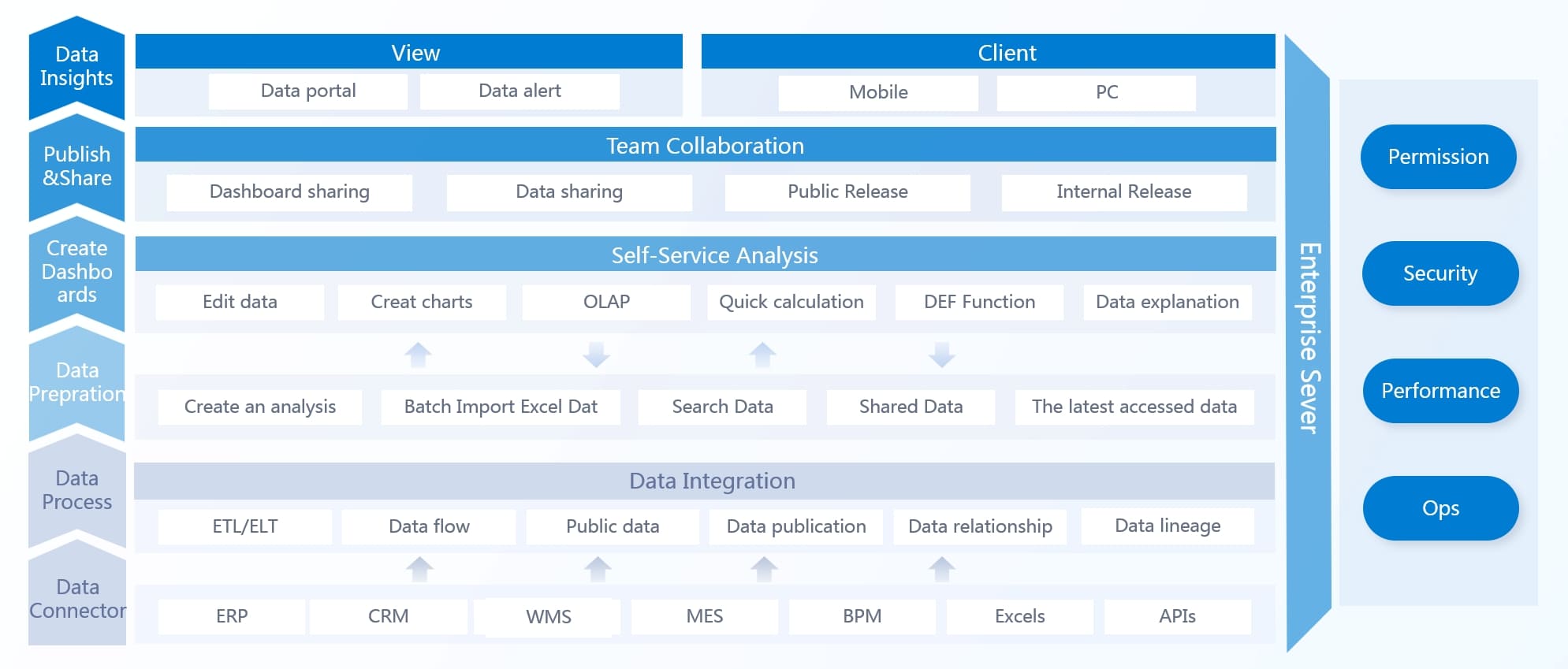
Here’s how FanRuan solutions help you implement data insights effectively:
- Cost Control: Scalable and cost-effective tools make advanced analytics accessible to organizations of all sizes.
- Conversational Analytics: Interactive dialogue features simplify data analysis, making it intuitive and user-friendly.
- Industry Expertise: Insights from over 92,000 projects ensure reliable and impactful solutions tailored to your needs.
- Data as a Productivity Tool: These solutions transform data into a powerful tool for decision-making and growth.
For example, FineBI’s visual dashboards allow you to monitor patient outcomes and identify trends quickly. You can use these insights to allocate resources efficiently or adjust treatment plans. FineDataLink’s real-time synchronization ensures your data remains accurate and up-to-date, enabling timely interventions.
By leveraging FanRuan solutions, you can close the gap between data insights and practical implementation. These tools empower you to make informed decisions, optimize operations, and deliver personalized care. With FanRuan, data becomes more than just numbers—it becomes a catalyst for better healthcare outcomes.
Healthcare data analysis is transforming how you experience care. Hospitals using automation and data governance reduce costs by up to 86% annually. Data analytics improves patient care by identifying medical errors and finding effective treatments through electronic health records. These advancements ensure better outcomes for patients while enhancing operational efficiency.
| Benefit | Description |
|---|---|
| Objectivity and Reliability | Standardized methods ensure reliable data interpretation. |
| Evidence-Based Decision Making | Robust evidence guides clinical practice and policy development. |
| Predictive Insights | Trends and patterns enable proactive healthcare interventions. |
In 2025, healthcare systems will rely on tools like FineBI and FineDataLink to address emerging challenges. By embracing data analytics, healthcare providers can deliver personalized, efficient, and impactful care that meets the needs of patients and communities. Click the banner below to try FineBI for free and empower your enterprise to transform data into productivity!
Continue Reading About Healthcare Data Analysis
What is Healthcare Business Intelligence and why it matters?
Mastering Healthcare Data Integration: A Best Practices Guide
The Impact of Healthcare BI Tools on Decision-Making and Patient Care
FAQ

The Author
Lewis
Senior Data Analyst at FanRuan
Related Articles

10 Best Retail Analytics Software Platforms for Retailers
Compare the 10 best retail analytics software platforms for retailers to boost sales, optimize inventory, and gain actionable customer insights.
Lewis
Dec 16, 2025
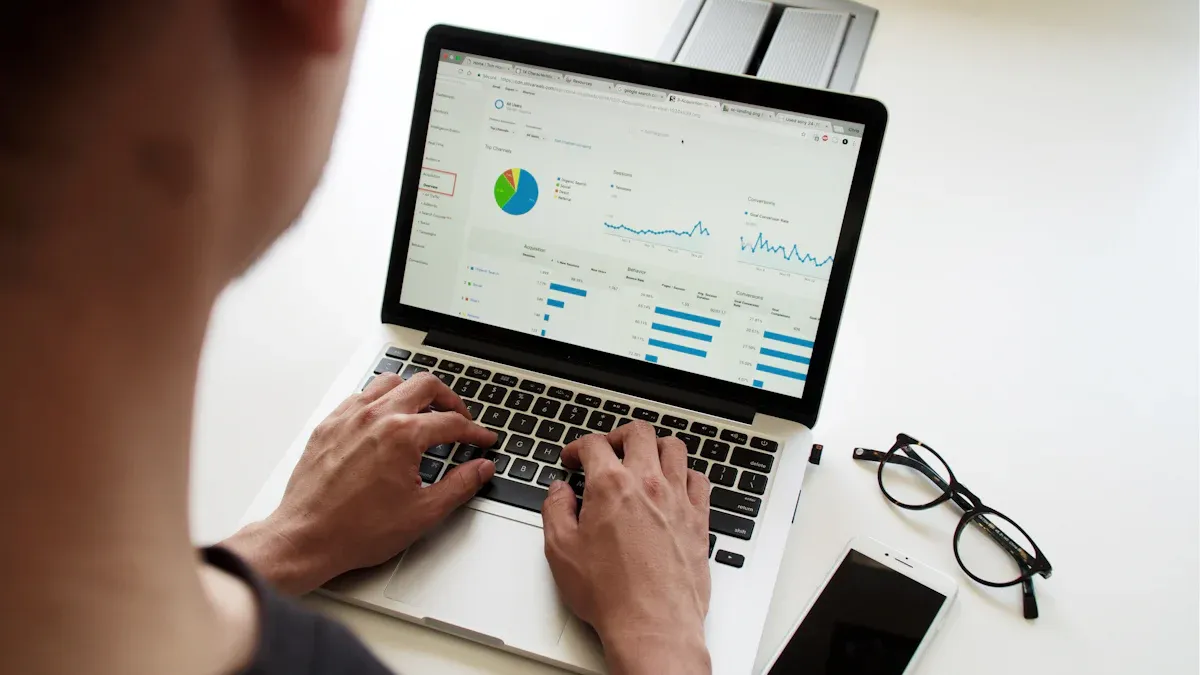
11 Best Tools for Research Analysis for Academics
Compare the 11 best tools for research analysis to boost academic and professional research efficiency, data management, and collaboration.
Lewis
Dec 11, 2025

10 Best Market Research Data Analysis Tools to Try This Year
See the top 10 market research data analysis tools to boost insights, streamline workflows, and make smarter business decisions this year.
Lewis
Dec 11, 2025
